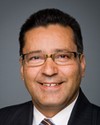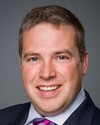Thank you very much. I do appreciate being invited to come and speak to you.
As indicated, my name is Marie Carter. I'm actually this week the interim chief executive officer, so I'm wearing two hats at the moment.
Engineers Canada is the national body that represents the 12 regulators of engineering in Canada. We represent more than 250,000 licensed engineers in the country.
At Engineers Canada we're aware, very aware, of the current and future labour shortages in engineering. In 2009 we carried out a labour market conditions report, which annually we update, and many of our engineering labour markets are characterized at the moment by a surplus of recent graduates with little or no experience but a shortage of people with five to ten years of experience. Those people who have specialized, practical experience are in quite short supply right now in Canada.
A 2008 report from the Information and Communications Technology Council indicated that between 2008 and 2015, Canadian employers would be looking to recruit some 126,000 to 180,000 workers in the engineering and technology fields.
We're looking at an average of some 16,000 to just over 22,000 people per year, with the supply of our domestic graduates meeting only a half to two-thirds of that demand, depending on what discipline we're looking at. We know that new graduates aren't a substitute for the experienced engineers with the specialized technical skills.
For the civil, mechanical, electrical, and petroleum engineering labour markets, the report projects low excess supply all the way through to 2018 and probably beyond. With retirements as well, we're creating challenges in recruiting experienced engineers in many of these fields in later years.
For the industrial and manufacturing engineering labour market, the report further notes that chronic labour shortages are projected to 2018, given the current levels of immigration and post-secondary enrolments.
We do our own annual report, entitled Trends in Engineering Enrolment and Degrees Awarded. The most recent one reported on 2010, when we had a total of 11,450 undergraduate degrees in engineering. In that year, mechanical engineering remained the program in which the most undergraduate degrees were awarded, following by electrical, civil, and chemical. So the standard old engineering programs are the ones that are still attracting a majority of the students.
To attempt to address the shortage that's evident now and into the future, the engineering profession is undertaking several actions. First, we're looking to the under-represented groups in engineering—women and indigenous people—to ensure diversity in the profession and help fill the skills gap.
According to the 2006 census, although women comprised 47% of the total workforce, we comprised only 13% of the engineering workforce. In fact, from our most recent data on actual licensed engineers, we're about 10% of the licensed professional engineers in the country.
The plateau of females pursuing engineering contrasts with the rise of female participation in other previously male-dominated occupations, such as law and medicine. For example, in the 20-year period from 1986 to 2006, the proportion of women who were lawyers and doctors increased by almost 17% and about 13.5% respectively, whereas for engineers we increased by only 6%.
So we do have a big untapped resource there with women, and we know that we have a lot of room for incorporating indigenous people into the engineering profession.
We're setting targets. We're improving access to training programs for engineers and fostering greater flexibility in the delivery of the engineering curriculum.
Secondly, we're forming partnerships with national and provincial indigenous-focused organizations—there is a big drive in Alberta with our Alberta association on this—to develop tools to promote engineering to indigenous students, targeting outreach and support programs that run right from kindergarten to university, because clearly you need to be on the path to get the appropriate high school credits to get going in engineering, and to raise the interest.
We're working to raise industrial and government financial support for programs to assist indigenous students in engineering disciplines. Manitoba has a reasonable bridging program at the University of Manitoba for indigenous people, but this really does need to be more widespread in the country.
Finally, over the last 10 years, Engineers Canada and our constituent associations have undertaken a number of projects to help ensure the timely integration of international engineering graduates into our profession and into the workforce. As a brief example, one of our current initiatives is the international engineering graduate road map, and that will be a comprehensive one-stop shop, essentially. It's a resource to ease the start of the international engineering graduate's navigation through the process of becoming licensed in Canada.
With support from HRSDC, we undertook a big project called “From Consideration to Integration”. One of the items that was identified as an issue was just the understanding from the immigrant's point of view of how our system in Canada works, so this project should really provide a lot more clarity from that perspective.
We've undertaken a lot of our projects in partnership with the federal government, not only with HRSDC but also with Citizenship and Immigration Canada, and we look forward to continuing that very successful working relationship.
From our perspective, we would strongly encourage the federal government and provincial and territorial governments to continue to focus on supporting strong science, technology, engineering, and mathematics education at all levels, with special emphasis on the under-represented groups, while also continuing to work with various professions to improve the foreign qualifications assessment and recognition process.
We know from our contacts in the regulated professions that we're probably leading in a lot of the initiatives in how far we've come with being able to recognize the foreign credentials, and also in making it easier for foreign-trained people to apply from offshore, to get the process started, and to understand what they need to do to get going.
From our perspective, we're quite proud of the work we're doing to address the current and future labour shortages in our profession.
Thank you very much. I'd be happy to answer questions.




